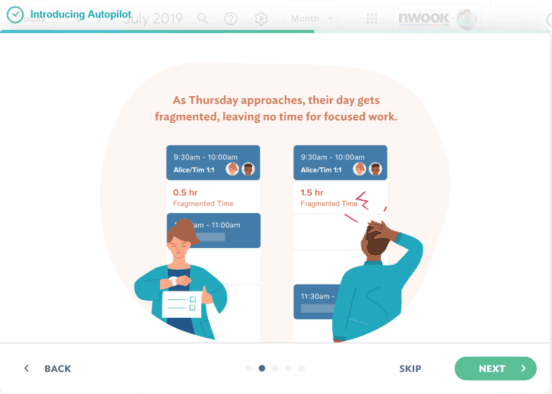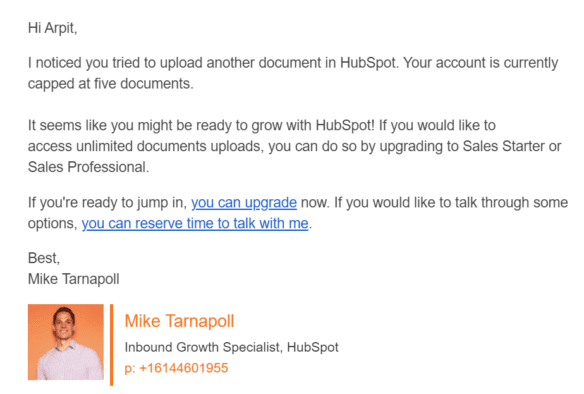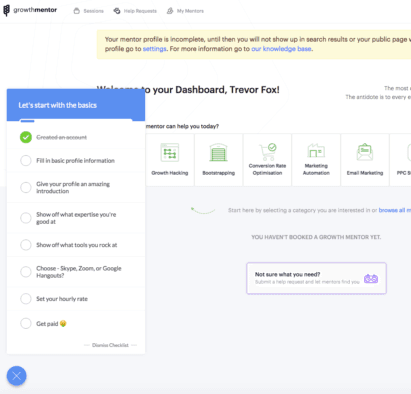Jun 19, 2019 | 6 minutes
4 Tactics to Automate the Adoption of Your Software with Zero Marketing Efforts
Beyond the walkthrough: today’s customers like to get their hands dirty and try several tools before choosing the one most suited to their needs.

A common problem faced by software companies is that customers are either unaware of some features or not sure how to use them.
Each customer has a unique set of requirements that the product itself should be able to help fulfill.
While walkthroughs and product tours have worked well for the better part of a decade, today’s savvy customers like to get their hands dirty and try several tools before choosing the one most suited to their needs.
This is why a traditional product tour is seen as an obstruction rather than a guide; as a result, product adoption suffers and users are unable to derive the full value of a product.
Let’s dive deep into the tactics to automate product growth and adoption.
1. Prioritize contextual onboarding
Understanding a user’s needs and personalizing the user experience simultaneously, right from the time the user signs up, is known as Contextual Onboarding and is a key driver of product adoption.
Needless to say, the only way to implement contextual onboarding is to automate the process. If implemented thoughtfully, it can eliminate the factors impeding feature discovery and promote feature adoption.
Let’s look at a really good example of contextual onboarding from a brand new app called Clockwise. In order to segment users, it’s critical to get to know them and understand their needs.
And the easiest way to do that is by asking them; see how Clockwise does that the moment you sign up and connect your Google Calendar.
Clockwise makes it clear that they wish to know about the user to better tailor the product to their needs. They couldn’t be more straightforward. Next, it goes on to gather more details about a user’s individual preferences in regards to working and meeting hours.
Based on a user’s responses, it presents a clear value proposition (2.5+ hours of potential focus time) and at the same time, highlights the core benefits of using the tool.
It’s interesting to note that this onboarding flow is not skippable and the great thing is that one doesn’t feel the need to skip it since it isn’t a feature tour. It feels like one is customizing the tool as per one’s personal preferences.
The next step shows how the tool works. However, as expected, a skip button appears the moment one clicks next on the section in the image below.
Lastly, Clockwise urges you to invite teammates by highlighting a benefit you will gain by doing so.
It’s worth noting that this beautifully-designed onboarding flow takes no more than two minutes to complete. Not only does the product benefit by getting to know a user’s needs to provide a personalized experience going forward, but the user also benefits by making sure that they get done what they came looking to do, effortlessly and without seeking support.
2. Deliver in-app prompts and automated emails
Relevant, timely and unobtrusive in-app prompts educate users about a product and guide them towards the aha moment. Prompts can be delivered as modals, tooltips, callouts or messages from a chat widget.
Automated emails complement the above by educating users outside the product and contribute significantly towards feature discovery and product adoption by bringing users back to the product.
The steps to implement both in-app prompts and automated emails are listed below:
User segmentation which can be done via contextual onboarding
Tracking in-app events
Setting up event-based triggers
Creating native-looking prompts and drafting customized emails
Bring everything together by triggering in-app prompts and email campaigns
In-app prompts and automated emails can be triggered based on one of the following:
Time-frame (X days after sign up)
An in-app event (After feature A is used)
A combination of the two (Feature B is not used X days after feature A is used)
Now let’s look at some examples of in-app prompts and automated emails from two of the most popular CRM tools. It’s no surprise that HubSpot is a leader when it comes to product-led growth.
Here’s an insightful read by Kieran Flanagan, HubSpot’s VP of Growth on their transition from inbound marketing to product-driven growth.
Below is a trigger-based in-app prompt that educates the user about a feature; it is relevant and just-in-time:
Once a HubSpot user starts using email sequences and tries to paste some text, they see the above prompt informing them about email templates.
While not unobtrusive, this is a great example of a relevant and timely prompt which, in all likelihood, will not annoy the user and drive them to try out the feature.
The action that triggered this prompt was pasting text after activating email sequences.
Next, let’s look at this highly personalized automated email that was triggered by an in-app event.
At first glance, one might get creeped out at that email since it sounds like someone literally watches every move you make within a product.
However, the fact that someone is there to help you and talk to you at every step of the journey quickly turns the act from creepy to comforting.
The email informs you about a resource limitation well in advance, gives you a chance to upgrade before you run out of the said resource, and leaves you with an offer to schedule a call with a specialist.
Unless one is just goofing around (or testing the product to gather material for an article), there is a high chance that this email contributes to HubSpot’s growth.
Moving on to the last example, here’s an automated email from Pipedrive’s onboarding sequence:
It is the 7th email that was sent on the 8th day of signing up. It focuses on one of its non-core but important features that might not be very evident to a new user but can help them derive significant value from the product.
The email contains 3 CTAs — a blog article, a tutorial video and the third to enable the feature within the app. This leaves the user with really no excuse to not try out the feature.
3. Implement checklists
Checklists are highly effective when it comes to educating users about product features that are not very evident or the ones that only get activated after a user completes certain steps.
They have been proven to boost activation through the cognitive biases of completion, reward and consistency. Here is a nicely implemented checklist by GrowthMentor:
It resides on the bottom-left, making it easy for people to collapse it and bring it back. If one is already familiar with the steps, one can easily dismiss the checklist.
Lastly, the reward in the last step of the checklist urges one to complete all the steps quickly; ignoring a reward isn’t easy. If you’re planning to give it a go, here are 6 tips to create a stellar checklist.
4. Gather feedback
A growing number of features and constant iterations is every product’s reality. While it is important to get users to try new features and embrace changes to the product experience, it is also critical to understand how users feel about those features and changes.
An effective method is to release new features to a specific set of users and gather feedback. Doing so makes it possible to evaluate whether a feature is useful or not and whether it needs to be improved or trashed before it is made available to the entire userbase.
Feedback also helps in customizing the product experience by making only relevant features available to each user cohort. What might seem irrelevant to several low-paying customers might be a valuable feature for an enterprise customer; one can only find out by seeking feedback from actual users.
In-app polls and mini-surveys are effective ways of collecting feedback. Feedier is a modern tool that allows one to gamify feedback collection through a number of unique ways to gather feedback.
Conclusion
Competition in the software space is increasing while the human attention span has never been lower. The only way to succeed is to build a great product by centering it around the customers’ needs.
Product adoption tools aid this process immensely by enabling companies to execute faster while saving resources. Lastly, evidence-based experimentation is a key driver of product-led growth and one shouldn’t forget to measure what one can.
Thanks to Aazar Ali Shad from Userpilot for his contribution to this article.
Ready to make the automation revolution happen?










